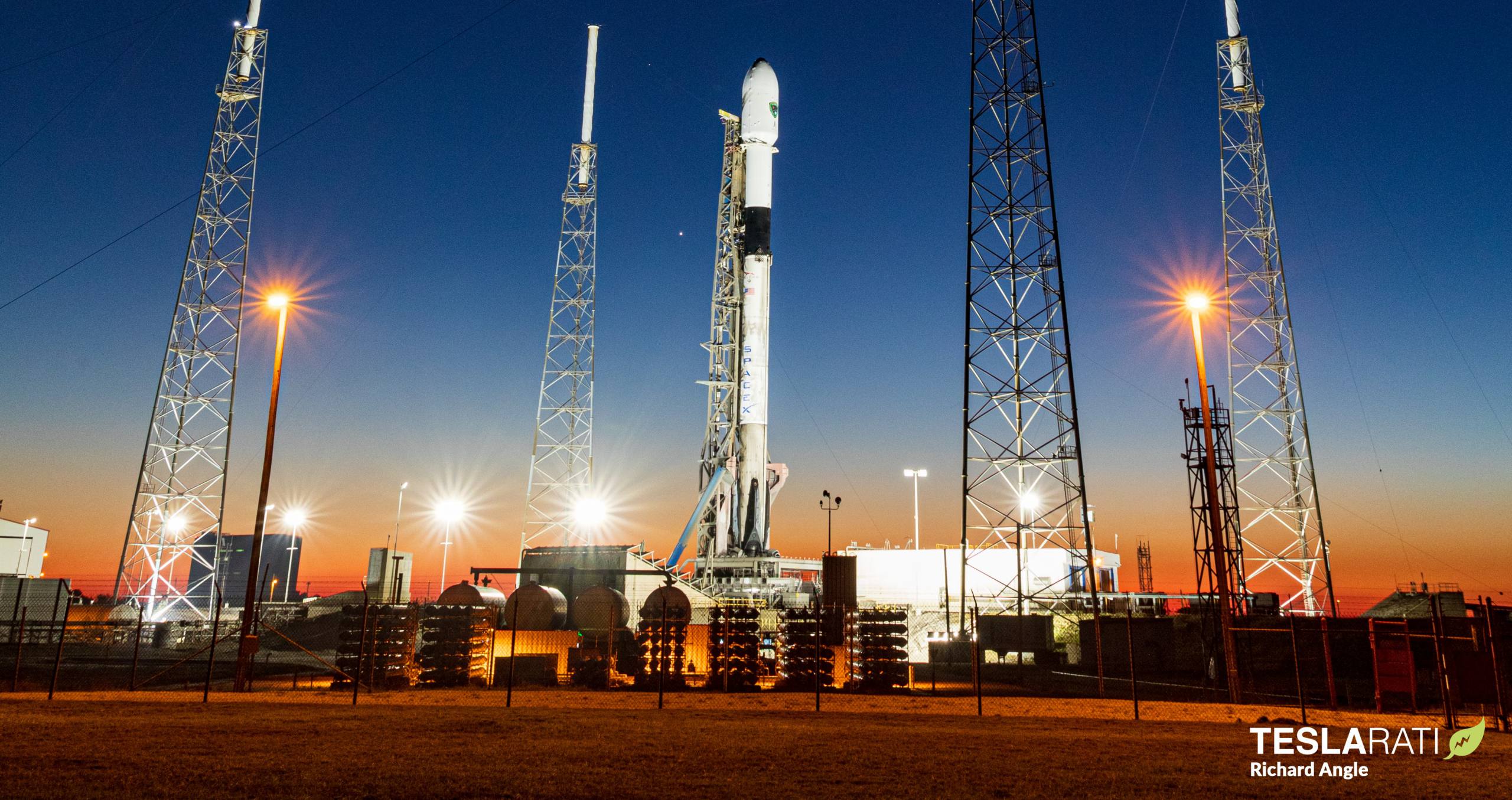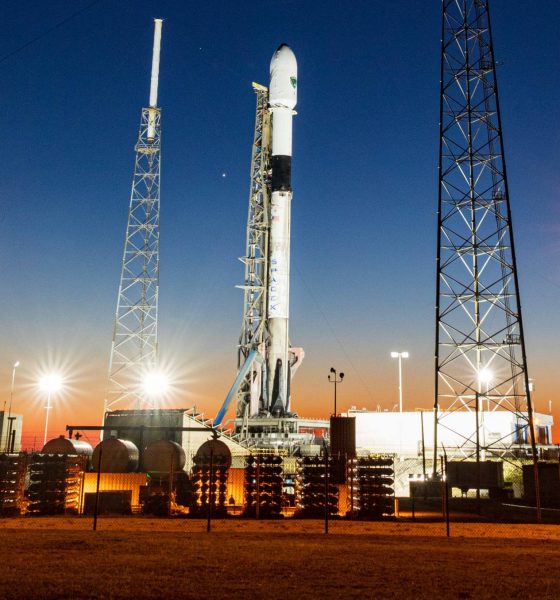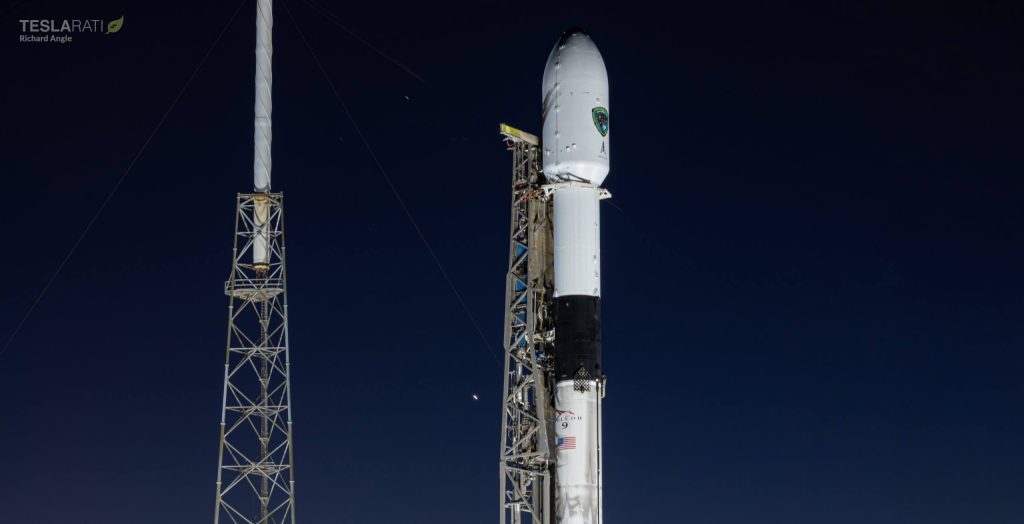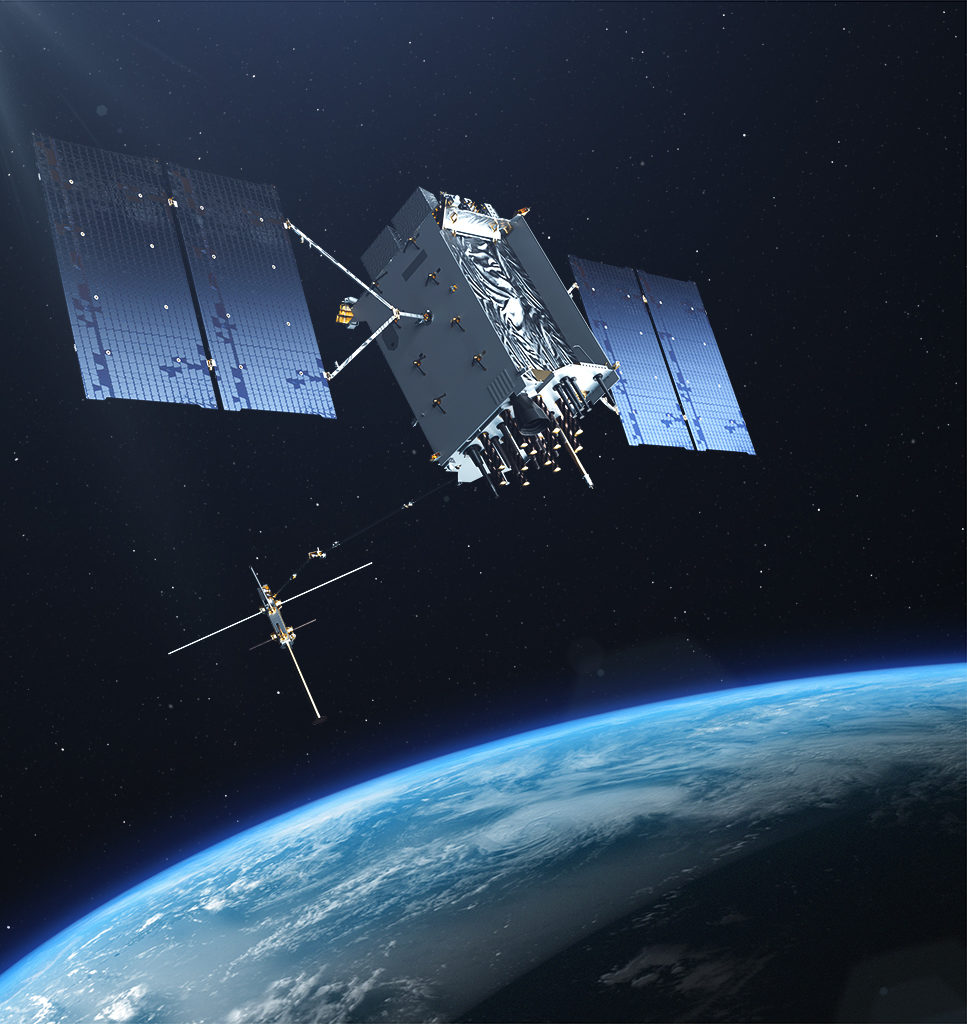

News
SpaceX ships head to sea for fifth upgraded GPS satellite launch [webcast]
Two SpaceX ships have headed to sea to recover parts of Falcon 9 after the rocket’s fifth upgraded GPS III satellite launch for the US military.
On Tuesday, SpaceX confirmed that Falcon 9 is scheduled to launch GPS III Space Vehicle 06 (SV06) no earlier than (NET) 7:10 am EST (12:10 UTC) on Wednesday, January 18th. Built by Lockheed Martin for an average of $610 million each [PDF], the payload is the sixth of ten upgraded GPS III satellites and weighs around 4.35 tons (~9600 lb). Its eventual destination is a circular Medium Earth Orbit (MEO) around 20,200 kilometers (12,550 mi) above Earth’s surface, where it will join dozens of other GPS satellites.
If past trends continue, SpaceX’s two-stage Falcon 9 rocket will be tasked with launching GPS III SV06 to a transfer orbit measuring around 400 kilometers by 20,200 kilometers. The satellite will then use its own propulsion system and propellant to raise its perigee and enter a circular, operational orbit.

The update that's rolling out to the fleet makes full use of the front and rear steering travel to minimize turning circle. In this case a reduction of 1.6 feet just over the air— Wes (@wmorrill3) April 16, 2024
SpaceX will then attempt to recover Falcon 9’s reusable booster on drone ship A Shortfall of Gravitas (ASOG), which will be stationed about 640 kilometers (~400 mi) northeast of the company’s Cape Canaveral Space Force Station LC-40 launch pad. ASOG was towed to sea on Friday, January 13th. Used once before to launch four astronauts on SpaceX’s Crew-5 mission, Falcon 9 B1077 will reportedly launch GPS III SV06, becoming the second flight-proven rocket to launch a GPS III satellite.
770 kilometers (~460 mi) downrange, recovery ship Doug – which left port on January 15th – will try to fish Falcon 9’s GPS III SV06 payload fairing halves out of the ocean for reuse. Fairing recovery and reuse have quietly become almost as reliable and routine as Falcon booster recovery. SpaceX is still the only company or group to successfully reuse an orbital-class rocket’s fairing.
GPS III SV06 will be SpaceX’s fifth upgraded GPS satellite launch since December 2018. The mission is part of a block of four contracts that represent a minor revolution in US military launch procurement. During SpaceX’s first GPS III launch, the company was forced to expend an entire Falcon 9 rocket – likely out of an abundance of caution and at the request of the US Air Force. For its three subsequent GPS III launches, SpaceX was able to recover each Falcon 9 booster while still launching the payload to the same orbit as the first expendable mission.

Soon after that first success, SpaceX won a contract worth $290.5 million for three more GPS III launches. At some point, the US military reassessed the situation and decided that SpaceX’s reusable Falcon boosters were becoming reliable enough to safely launch military payloads. The Space Force ultimately renegotiated its contract with SpaceX to allow the company to launch GPS III SV05 and SV06 on reused Falcon 9 boosters, reducing the total cost to the taxpayer to $226.5 million.
After GPS III SV06, the Space Force only has one GPS III launch contract left – using a ULA Vulcan rocket that has yet to fly. The three remaining GPS III satellites still need launch contracts, and the first tranche of ten GPS III satellites will be followed by up to 22 GPS IIIF Follow On satellites that will also need launches. Given the company’s track record and lower prices, SpaceX will likely be tasked with launching a large portion of those future satellites throughout the 2020s and into the 2030s.
Tune in below around 6:55 am EST (11:55 UTC) to watch SpaceX’s fifth GPS III launch live.

Elon Musk
Starlink passes 9 million active customers just weeks after hitting 8 million
The milestone highlights the accelerating growth of Starlink, which has now been adding over 20,000 new users per day.

SpaceX’s Starlink satellite internet service has continued its rapid global expansion, surpassing 9 million active customers just weeks after crossing the 8 million mark.
The milestone highlights the accelerating growth of Starlink, which has now been adding over 20,000 new users per day.
9 million customers
In a post on X, SpaceX stated that Starlink now serves over 9 million active users across 155 countries, territories, and markets. The company reached 8 million customers in early November, meaning it added roughly 1 million subscribers in under seven weeks, or about 21,275 new users on average per day.
“Starlink is connecting more than 9M active customers with high-speed internet across 155 countries, territories, and many other markets,” Starlink wrote in a post on its official X account. SpaceX President Gwynne Shotwell also celebrated the milestone on X. “A huge thank you to all of our customers and congrats to the Starlink team for such an incredible product,” she wrote.
That growth rate reflects both rising demand for broadband in underserved regions and Starlink’s expanding satellite constellation, which now includes more than 9,000 low-Earth-orbit satellites designed to deliver high-speed, low-latency internet worldwide.
Starlink’s momentum
Starlink’s momentum has been building up. SpaceX reported 4.6 million Starlink customers in December 2024, followed by 7 million by August 2025, and 8 million customers in November. Independent data also suggests Starlink usage is rising sharply, with Cloudflare reporting that global web traffic from Starlink users more than doubled in 2025, as noted in an Insider report.
Starlink’s momentum is increasingly tied to SpaceX’s broader financial outlook. Elon Musk has said the satellite network is “by far” the company’s largest revenue driver, and reports suggest SpaceX may be positioning itself for an initial public offering as soon as next year, with valuations estimated as high as $1.5 trillion. Musk has also suggested in the past that Starlink could have its own IPO in the future.
News
NVIDIA Director of Robotics: Tesla FSD v14 is the first AI to pass the “Physical Turing Test”
After testing FSD v14, Fan stated that his experience with FSD felt magical at first, but it soon started to feel like a routine.

NVIDIA Director of Robotics Jim Fan has praised Tesla’s Full Self-Driving (Supervised) v14 as the first AI to pass what he described as a “Physical Turing Test.”
After testing FSD v14, Fan stated that his experience with FSD felt magical at first, but it soon started to feel like a routine. And just like smartphones today, removing it now would “actively hurt.”
Jim Fan’s hands-on FSD v14 impressions
Fan, a leading researcher in embodied AI who is currently solving Physical AI at NVIDIA and spearheading the company’s Project GR00T initiative, noted that he actually was late to the Tesla game. He was, however, one of the first to try out FSD v14.
“I was very late to own a Tesla but among the earliest to try out FSD v14. It’s perhaps the first time I experience an AI that passes the Physical Turing Test: after a long day at work, you press a button, lay back, and couldn’t tell if a neural net or a human drove you home,” Fan wrote in a post on X.
Fan added: “Despite knowing exactly how robot learning works, I still find it magical watching the steering wheel turn by itself. First it feels surreal, next it becomes routine. Then, like the smartphone, taking it away actively hurts. This is how humanity gets rewired and glued to god-like technologies.”
The Physical Turing Test
The original Turing Test was conceived by Alan Turing in 1950, and it was aimed at determining if a machine could exhibit behavior that is equivalent to or indistinguishable from a human. By focusing on text-based conversations, the original Turing Test set a high bar for natural language processing and machine learning.
This test has been passed by today’s large language models. However, the capability to converse in a humanlike manner is a completely different challenge from performing real-world problem-solving or physical interactions. Thus, Fan introduced the Physical Turing Test, which challenges AI systems to demonstrate intelligence through physical actions.
Based on Fan’s comments, Tesla has demonstrated these intelligent physical actions with FSD v14. Elon Musk agreed with the NVIDIA executive, stating in a post on X that with FSD v14, “you can sense the sentience maturing.” Musk also praised Tesla AI, calling it the best “real-world AI” today.
News
Tesla AI team burns the Christmas midnight oil by releasing FSD v14.2.2.1
The update was released just a day after FSD v14.2.2 started rolling out to customers.

Tesla is burning the midnight oil this Christmas, with the Tesla AI team quietly rolling out Full Self-Driving (Supervised) v14.2.2.1 just a day after FSD v14.2.2 started rolling out to customers.
Tesla owner shares insights on FSD v14.2.2.1
Longtime Tesla owner and FSD tester @BLKMDL3 shared some insights following several drives with FSD v14.2.2.1 in rainy Los Angeles conditions with standing water and faded lane lines. He reported zero steering hesitation or stutter, confident lane changes, and maneuvers executed with precision that evoked the performance of Tesla’s driverless Robotaxis in Austin.
Parking performance impressed, with most spots nailed perfectly, including tight, sharp turns, in single attempts without shaky steering. One minor offset happened only due to another vehicle that was parked over the line, which FSD accommodated by a few extra inches. In rain that typically erases road markings, FSD visualized lanes and turn lines better than humans, positioning itself flawlessly when entering new streets as well.
“Took it up a dark, wet, and twisty canyon road up and down the hill tonight and it went very well as to be expected. Stayed centered in the lane, kept speed well and gives a confidence inspiring steering feel where it handles these curvy roads better than the majority of human drivers,” the Tesla owner wrote in a post on X.
Tesla’s FSD v14.2.2 update
Just a day before FSD v14.2.2.1’s release, Tesla rolled out FSD v14.2.2, which was focused on smoother real-world performance, better obstacle awareness, and precise end-of-trip routing. According to the update’s release notes, FSD v14.2.2 upgrades the vision encoder neural network with higher resolution features, enhancing detection of emergency vehicles, road obstacles, and human gestures.
New Arrival Options also allowed users to select preferred drop-off styles, such as Parking Lot, Street, Driveway, Parking Garage, or Curbside, with the navigation pin automatically adjusting to the ideal spot. Other refinements include pulling over for emergency vehicles, real-time vision-based detours for blocked roads, improved gate and debris handling, and Speed Profiles for customized driving styles.








